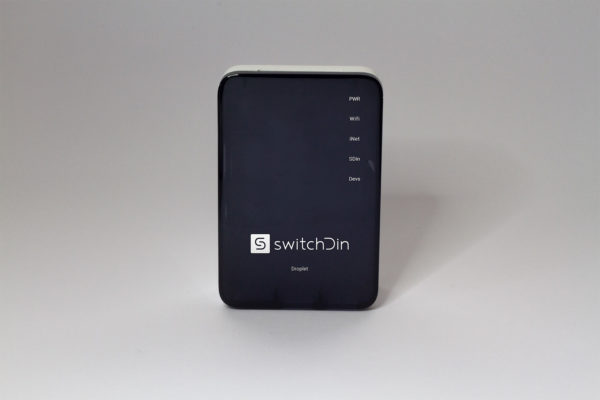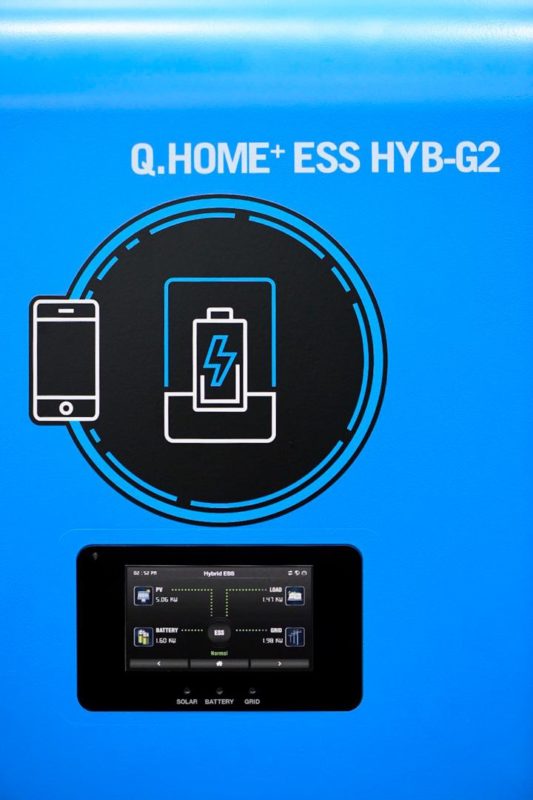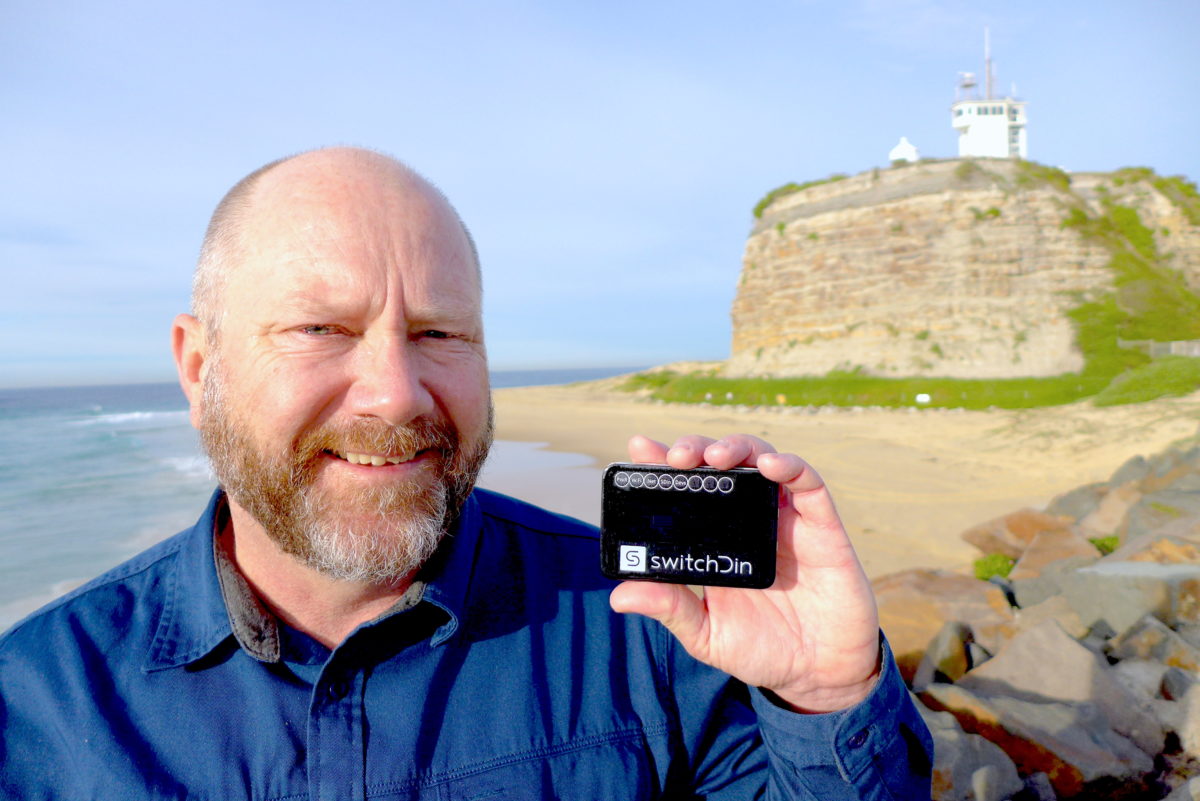In a first for both companies, German-Korean solar-system manufacturer Hanwha Q Cells has invested $5 million in Australia’s SwitchDin, an innovative provider of monitoring and management systems that orchestrate small-scale distributed energy resources (DER) into microgrids and virtual power plants (VPPs).
The investment by Q Cells, which makes it a minority shareholder in SwitchDin and is its first formal partnership with an Australian software provider, is also SwitchDin’s first strategic partnership, giving it not only increased opportunity to wrap its technology into Hanwha’s rooftop solar products as they continue to roll out around the world, but entry to collaborations with global utilities.
“We’ve worked together on smart energy management systems since 2018,” Peter Bae, Head of Australia’s Hanwha Q Cells operations told pv magazine, “and we came to believe that SwitchDin has more than enough development capacity and capability in that area.”
SwitchDin CEO Andrew Mears referred to the fact that Q Cells is one of the world’s largest manufacturers of solar panels, with about 11% of the global market, and told pv magazine, “From a tactical perspective, they have fantastic supply channels and we will build onto those channels; but also, strategically, having this type of partner in key markets can really open doors in terms of access to larger utility programs and large-scale deployments.”
DER, what’s that?
The DER conversation in Australia has dramatically matured over the past 18 months with utilities in several states recognising the need to manage vast rooftop-solar-generation resources, given their potential to destabilise energy systems by flooding the grid with homemade energy exports; AEMO seeing the potential in a coordinated rooftop resource to help balance demand and supply at critical times by calling on virtual power plants (VPPs) close to load centres; and states subsidising uptake of smart battery systems that will enable grid integration of VPP and microgrid resources.
On Friday, the Federal Government also announced $19 million in grant funding for feasibility studies into 17 microgrid projects aiming to better meet the energy-supply needs of regional remote communities. In an accompanying statement, the government said that microgrids can help reduce electricity bills for regional and remote communities, as well as deliver benefits for the grid as a whole by saving hundreds of millions of dollars in network costs.
In parallel with these and other developments, SwitchDin, has demonstrated via a number of projects its hardware-agnostic ability to coordinate the systems of a range of module, inverter and battery manufacturers to beneficial effect for consumers and networks.
For example, it was chosen by Horizon Power, the energy provider to remote and regional Western Australia, to partner on its Onslow microgrid project and provide solar-plus-battery powered households and businesses in the system with a SwitchDin Droplet, its secure gateway device (SGD); the Droplets enable Horizon Power to orchestrate feed-in management, demand management and battery management capability of individual sites, to maximise system-wide efficiency.

Image: SwitchDin
Q.Home is completed by SwitchDin
Such are the technological capabilities that attracted Hanwha Q Cells, which launched Q.Home, its integrated residential solar power system in Australia late last year: “SwitchDin’s energy management software and Droplet hardware also matches well with our fully wrapped PV-ESS Q.Home, compared to other players in the market,” says Bae.
He believes that the separate Hanwha Energy subsidiary, Nectr, Australia’s newest energy retailer, will also enjoy synergies from the integration of SwitchDin with Q.Home in Australia: “We are independent business entities, but I can say that by enhancing the marketability of our PV, hybrid inverter and battery system, I believe Nectr can also enjoy the benefits of deploying these DER-enabled systems in the residential space.”

Image: Dave Tacon
Hannah Heath, Chief Strategy Officer at Nectr, told pv magazine in May that Nectr will be launching a distributed-energy pilot in coming months: “We’ll be an integrated party in that space,” Heath said.
In Europe, Q Cells has been integrating part of SwitchDin’s software in its residential battery systems since 2019. Mears says, “That’s been a fantastic experience, and we were able to demonstrate that we can really help manufacturers fast track their entry into this smart, connected DER space by embedding that software inside their product from the get go.”
Investment to fuel R&D and growth
He adds that the $5 million of incoming investment will allow SwitchDin, which produced its first commercial system in 2015, to scale its R&D activities and accelerate growth in Australia and Europe.
Its systems are currently installed across 2,000 residential, commercial and industrial sites, and the company is working with South Australian Power Networks, AusNet Services in Victoria and other electricity providers to roll out distributed-energy-management capabilities.
Mears says that the underlying business case for integrating management-control capabilities with rooftop solar systems is Australia’s high penetration of PV. “For example, Western Australia has recognised that without this type of service, they just won’t be able to offer more customer-owned PV because the network won’t be able to coordinate with them,” he says.
Supporting network services and the rush to PV
In WA, one in three homes has solar installed, and in April it became the first state to release a DER Roadmap — which plans to mitigate the difficulties and soak up the advantages of distributed resources in coming years.
The difficulties are projected to become critical by 2022: that is, in the middle of the day when rooftop generation is high and demand is low, leading to high levels of energy export to the grid, the system can be left spinning its wheels, in danger of blackout; but Synergy, the state-owned energy provider must still maintain generation capacity to meet high demand in the evenings, when rooftop generation is low.
Control of the two-way energy flow and connected storage devices, along with incentives for consumers to shift electricity demand to the middle of the day, are key to managing the grid to benefit everyone: those with solar on their rooftops, those aspiring (Western Australians install solar at the rate of 2,000 households a month), and those who can’t have solar on top, for whatever reason. “These are the key trends,” says Mears.
Australia is the leading global market for solving such problems of rooftop solar integration into grids not built to accommodate two-way flows of variable energy supply, says Mears: “It’s the best place in the world for developing a product like ours.”
For Q Cells’ part, Bae says, “We’d like to know more about the consumer benefits in the coming VPP and microgrid era, how these projects can smoothly align with the grid operator, and how we can provide the ultimate actual benefit for the earth,” by enabling increased renewable penetration.
This content is protected by copyright and may not be reused. If you want to cooperate with us and would like to reuse some of our content, please contact: editors@pv-magazine.com.









By submitting this form you agree to pv magazine using your data for the purposes of publishing your comment.
Your personal data will only be disclosed or otherwise transmitted to third parties for the purposes of spam filtering or if this is necessary for technical maintenance of the website. Any other transfer to third parties will not take place unless this is justified on the basis of applicable data protection regulations or if pv magazine is legally obliged to do so.
You may revoke this consent at any time with effect for the future, in which case your personal data will be deleted immediately. Otherwise, your data will be deleted if pv magazine has processed your request or the purpose of data storage is fulfilled.
Further information on data privacy can be found in our Data Protection Policy.